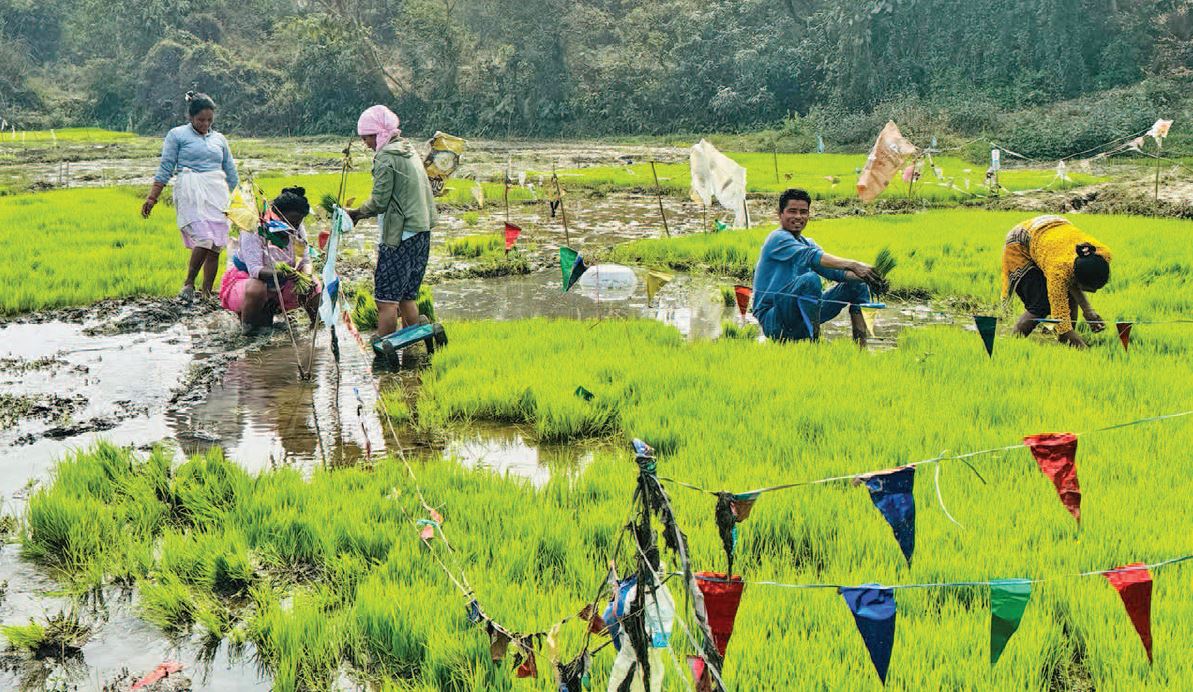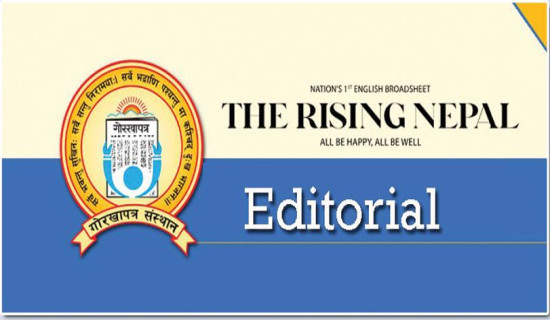- Monday, 24 February 2025
Farmers in Nawalpur busy in planting Chaite dhan
By Meena Kandel,Kawasoti, Feb. 24: Chaite Dhan (Spring paddy) planting has begun in Nawalpur. Farmers in various parts of the district, particularly in wetland areas with adequate irrigation facilities, are currently engaged in planting spring paddy.
As winter paddy yields better production compared to monsoon paddy, farmers have been increasingly inclined towards its cultivation.
Winter paddy is grown in Kawasoti, Devchuli, Gaindakot, Madhyabindu Municipality, Binayi Tribeni Rural Municipality, Bulingtar Rural Municipality, and Baudikali Rural Municipality. Farmers in these areas are assisting each other in planting paddy. According to the Agriculture Knowledge Centre Nawalpur, paddy pocket areas are being developed in regions with irrigation facilities and sufficient land to promote winter paddy cultivation.
Agricultural economist of the centre Sanjay Dhakal said that in areas where the pocket zone is implemented, farmers receive a 75 per cent subsidy on irrigation, seeds, mechanisation, and other inputs through cost-sharing.
To promote winter paddy, the centre has allocated NPR 11 million for the programme, Dhakal further informed.
Last year, spring paddy was cultivated on 1,053 hectares of land, yielding 6,245 metric tonnes of paddy, according to the centre's information officer, Bishwas Kafle.
He also mentioned that an additional 40 hectares are expected to be brought under cultivation this year.
Keshav Prasad Tiwari, head of the centre, said that the expansion of spring paddy cultivation has been increasing annually due to its higher yield compared to monsoon paddy.
While monsoon paddy yields
3.98 metric tonnes per hectare, spring paddy yields 5.93 metric tonnes per hectare, he said.
Since spring paddy offers better yields and the designated pocket areas have sufficient irrigation facilities, planting has become more convenient, Tiwari added.
In the district, varieties such as Chait-5, Hardinath-1, and other local breeds are commonly cultivated as spring paddy.














